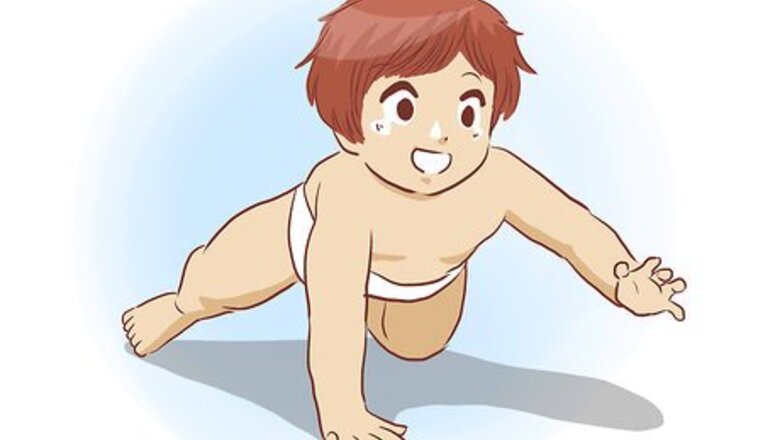
views
Taking Precautions

Determine if your baby is ready for a walker. There are differing opinions on exactly when a baby is ready to use a baby walker. There is no set age, since all babies develop at their own rate. However, there are certain signs that indicate when the baby is ready to use a baby walker: In order to use a baby walker, the baby should be able to sit up on their own and be able to crawl. Sitting up is necessary because the baby needs to sit up in the walker. The ability to crawl is important because the baby has to have some control over the movement of their legs in order to make the baby walker move. Some parents wait to use a baby walker until after their baby begins to pull themselves up on furniture. This could be based on the idea that the baby walker will prevent the baby from bumping their head or getting hurt in some other way if they fall to the floor.
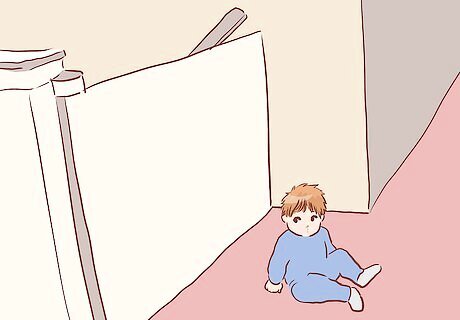
Make your home as walker-friendly as possible. Due to the fact that baby walkers are meant to roll, several things need to be kept in mind whenever a baby is using one: First of all, the floor needs to be smooth with no loose rugs that can catch on the wheels or bunch up beneath the walker. It is also a good idea to make sure that there is a wide open area so that the baby walker doesn't get stuck. The parent should check the area for anything dangerous or fragile that will be within the baby's reach. Any stairs should be blocked with a door or sturdy baby gate to prevent the baby from accidentally going down them in the walker. You can also use baby gates to block any rooms you want to prevent the baby from entering. Make sure there are no sharp edges that your baby could run into. Remove or cover any sharp edges that are at the level of the baby's head.
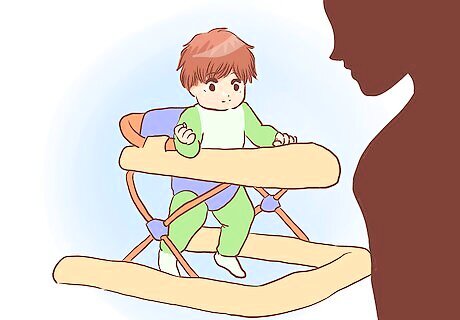
Keep an eye on your baby when he or she is in the walker. A baby walker should never replace parental supervision. In fact, parents should stay in the room with a baby that is using a walker to prevent them from getting stuck or injured. The added mobility can allow the baby to get to places and reach things that were not accessible while crawling.
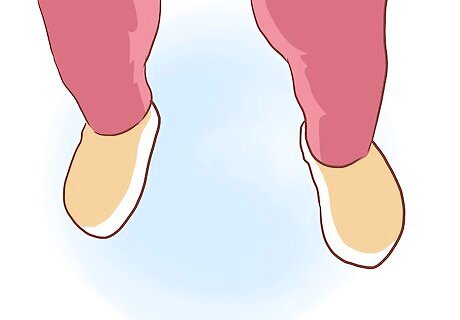
Put your baby’s shoes on if you are using the walker outside. If the walker is used outside, the baby should wear shoes because the surfaces are rougher. Also, narrow sidewalks are not a good idea because the walker can tip over the edge and cause the baby to fall and get injured.
Introducing Your Baby to the Walker
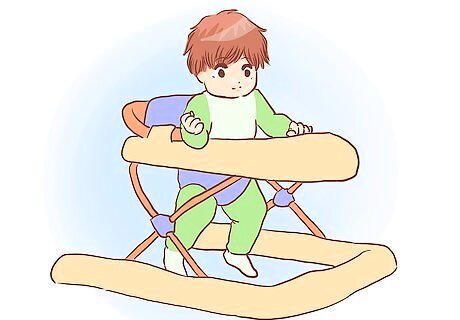
Work with your baby to help him or her feel comfortable with the walker. Most babies are pretty easy and willing to be put into a baby walker, but some may be a little resistant. The resistant babies might just be having a bad day and not be interested in exploring something new, or they could possibly be afraid of it. If they are really adamant about not going in the baby walker, the parent can sit on the floor near the baby walker and hold the baby on their lap so that they can see and touch it. If there are toys on the baby walker, the parent can use an excited voice while playing with the toys in order to get the baby interested.
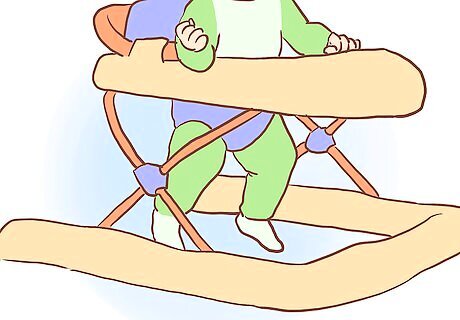
Make sure your baby’s legs go where they are supposed to. When the baby is comfortable with the baby walker, whether at the initial try or after acclimating, the parent should gently lift the baby and lower them into the seat part of the baby walker. It is important that each of the baby’s legs goes into a separate leg hole and that their toes do not get caught anywhere. Once the baby’s bottom is resting in the seat of the walker, the parent needs to fasten the restraining belt because it will help to prevent the baby from sliding out of position.
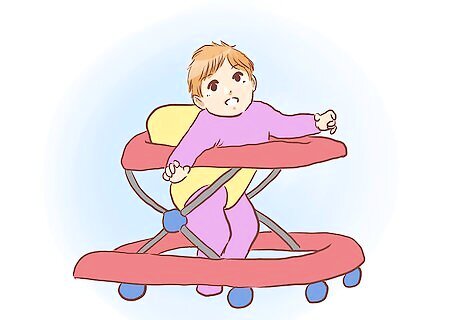
Encourage your baby to stand. If the baby just sits in the walker, it is probably because they haven't yet realized their new ability to stand up without falling. One way to encourage the baby to stand is for the parent to hold the baby by the waist and stand them up and then move their hands away from the baby. Another way a parent can encourage standing is to allow the baby to use the parent’s hands to pull themselves up. After several attempts, the baby will usually get the idea that it is safe to stand while in the baby walker. Babies that are not attempting to stand on their own may just need a little more patience and encouragement from the parents.
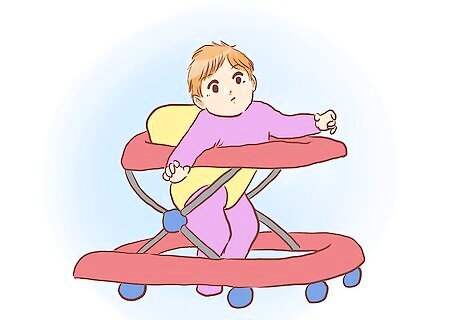
Teach your baby how to move the walker. Learning to stand while in the walker is only half of the equation. In order for it to be purposeful, the baby still needs to learn how to get the walker to move. For most, the initial movement is rather accidental. The excitement causes them to kick their feet and that motion thrusts the baby walker into action. However, other babies might still need a little help getting the walker to go. Sometimes, holding a favorite food or toy in front of the baby in the walker will be enough encouragement for them to kick and move the walker. Other parents might find that they need to start off slowly and carefully pull the baby walker while the baby is in it. If this is done, it is important that the parent keep an eye on the baby’s feet to be sure they aren't dragging or twisting their legs.

Be patient. Since this is totally new to the baby, their initial movements in the walker will be sudden and erratic. This motion might startle some babies, but gentle soothing and encouragement should keep them using the baby walker. It usually takes a baby some time to be able to move in a particular direction or keep moving the walker for any length of time. If the baby seems to be getting tired, or very frustrated, the parent should remove them from the baby walker and allow them to do something else.
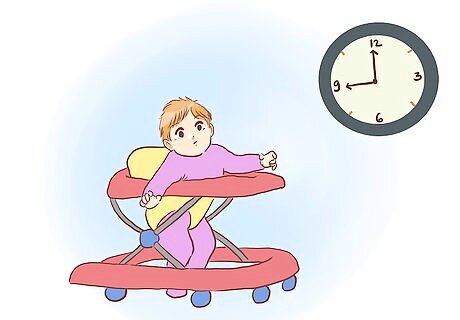
Try to use the walker for just 15 minutes a day. Although the baby walker can be a great tool in helping your baby to walk, too much time in the walker can have negative consequences. For example, sitting in a walker only strengthens the muscles in the lower part of the baby's leg, but walking also requires strength in the upper leg muscles It's important for the baby to practice crawling, as this helps to develop both arm and leg strength, and promote co-ordination. A baby who sits in a walker all day will be delayed in learning to crawl. Although using the walker gives the baby confidence standing on their own two feet, the walking motion itself is different. In a walker, the baby moves only on the tips of their toes, whereas proper walking involves standing on the flats of the feet.
Being Aware of Disadvantages
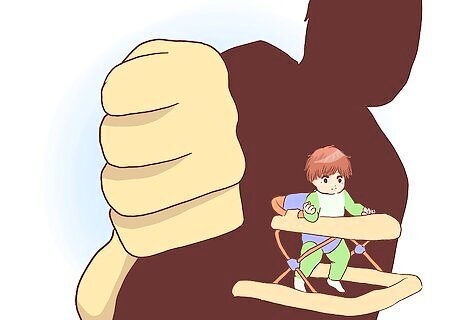
Understand that some people oppose baby walkers. There are many doctors that oppose the use of baby walkers and recommend that the parents do not use these products with their children. Most of their opposition is due to the injury risks that are involved, but there can also be disadvantages in terms of the physical development of the baby.

Be aware that your baby could become dependent on the walker for support. One disadvantage of using a baby walker is the possibility of the baby becoming dependent on the support it gives when they start to fall. As a result, the baby might not feel secure enough to stand and walk when they are not in the baby walker. This could delay the baby’s ability to walk independently. In fact, it is possible that using a baby walker could cause the baby’s legs to strengthen more slowly, as they don not need to support the baby's full weight when in a walker.
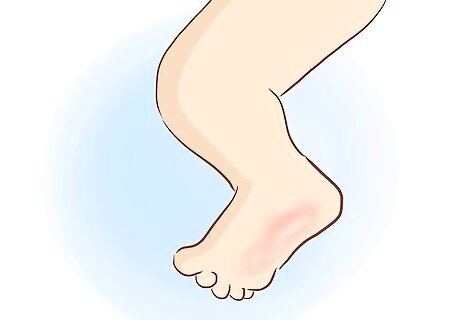
Keep your baby’s feet out of the way. There is the possibility of the walker actually running over the baby’s feet. The baby’s feet can also get entangled on various parts of some walkers. This could result in bruises, abrasions, and possibly even broken bones if the walker continues to move while the feet are caught.
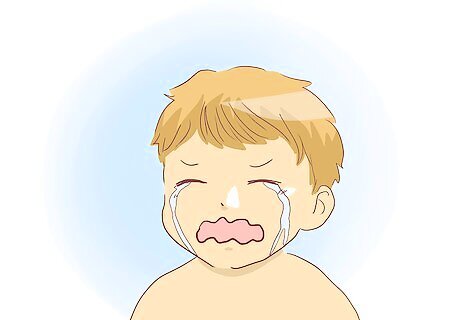
Know that there is a chance your baby could tip over. An even more likely cause of injury is the wheels getting stuck, which causes the baby walker to stop moving. If the baby tries to force the baby walker to move, it could tip over and injure the baby.
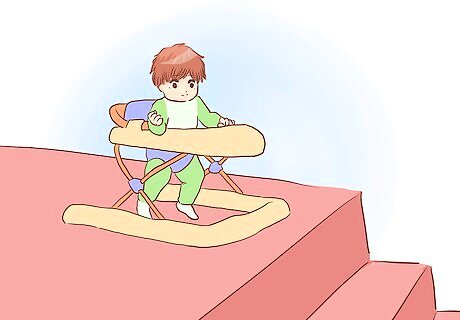
Keep the walker away from stairs. One of the worst possible incidences that might occur is if the baby walker is used near steps or some other raised surface. Babies in walkers are very quick and could tumble down the stairs or off the raised surface in an instant. This could cause very serious injuries.











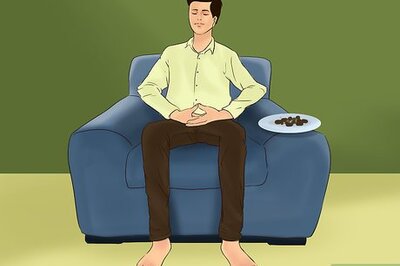



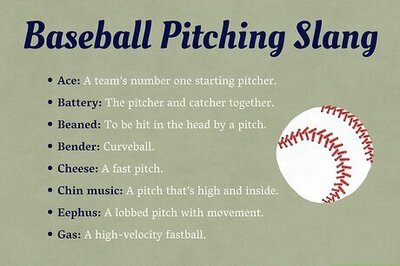


Comments
0 comment